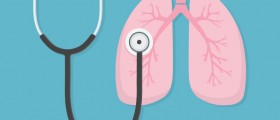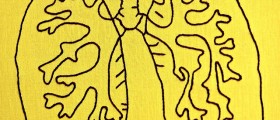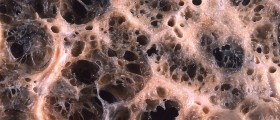
Bullous Emphysema
Bullous emphysema is a chronic and progressive respiratory disease. It features with hyperinflation of the lungs which is a consequence of destruction of alveoli, terminal parts of respiratory tract. While, breathing air goes through wind pipe and further down bronchioli finally reaching alveolar sacs. Alveolar sacs are terminal parts of the lungs and they are in charge with exchange of oxygen and carbon dioxide. They are rather thin which makes the process of gas exchange easy.
Symptoms of Bullous Emphysema
The symptoms of the disease do not occur in the beginning of the disease. They become evident only when sufficient amount of lung tissue has been destroyed. Insufficient exchange of oxygen and carbon dioxide eventually leads to troubles with breathing. The air that is inhaled stay trapped in the lungs and the body suffers from lack of oxygen. Structural changes of the lung tissue make it susceptible to infections. Infections cause prolonged cough and expectoration of sputum. Wheezing is another symptom of the advanced disease. In terminal stage patients are cyanotic and they require permanent oxygen therapy.
Causes of Bullous Emphysema
The majority of patients suffering from bullous emphysema are smokers. Bullous emphysema may as well affect people who are suffering from chronic bronchitis. And air pollution is another cause of this disease.
Treatment for Bullous Emphysema
The goal of the therapy is reduction of inflammation and destruction of air sacs and improvement of the already existing symptoms. Infections which commonly occur in patients with bullous emphysema are treated with antibiotics. Shortness of breath can be improved by bronchodilatators. In some patients even inhalations of corticosteroids are prescribed since they can reduce the inflammation and improve the breathing.
Patients are advised to quit smoking. Still it is hard for most of them to get rid of this filthy habit. Smoking can only aggravate the symptoms of the disease.
The disease can be brought under control but patients suffer from occasional flare-ups which tend to intensify in advanced stages of the disease. In terminal stage of the disease patients are under permanent medicamentous therapy and requires constant supply with oxygen. Unfortunately the outcome of the disease is not so good and patients with severe form of bullous emphysema eventually die.








_f_280x120.jpg)








Your thoughts on this
Loading...